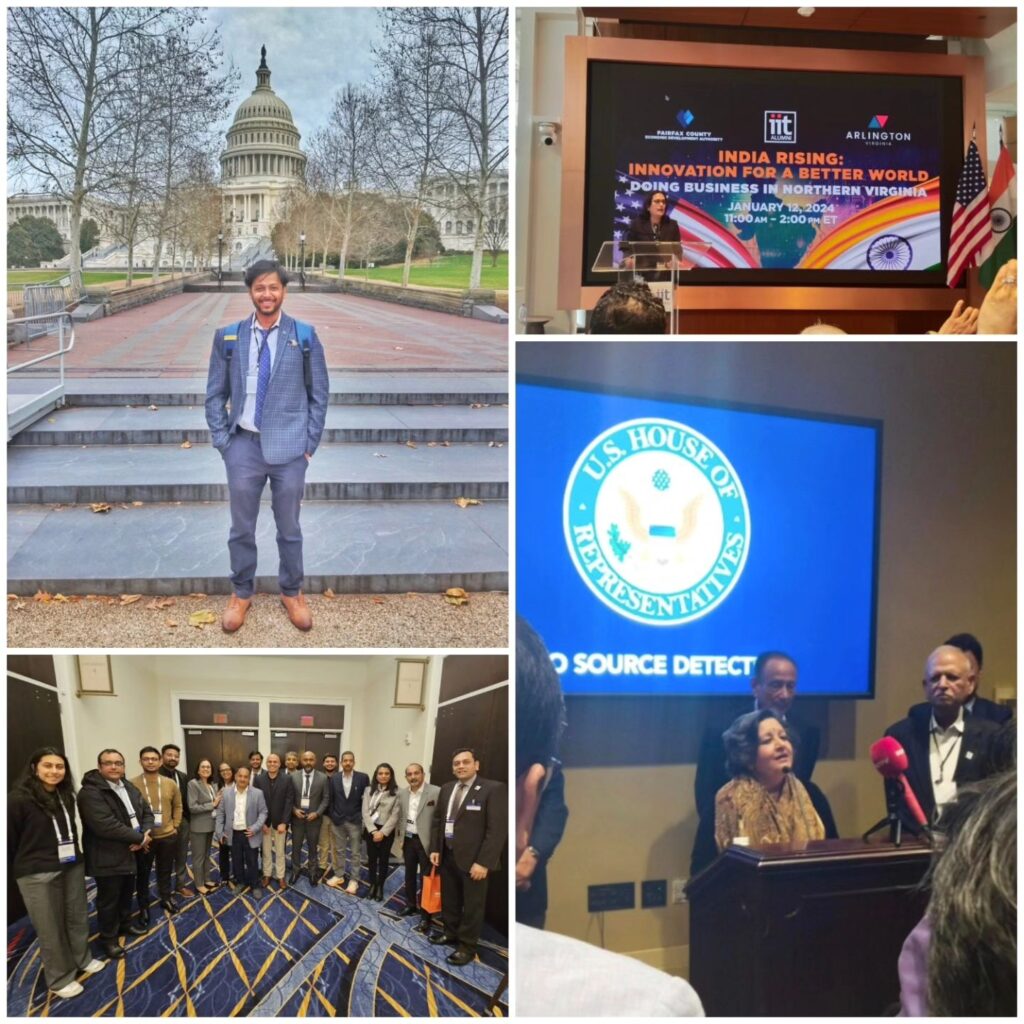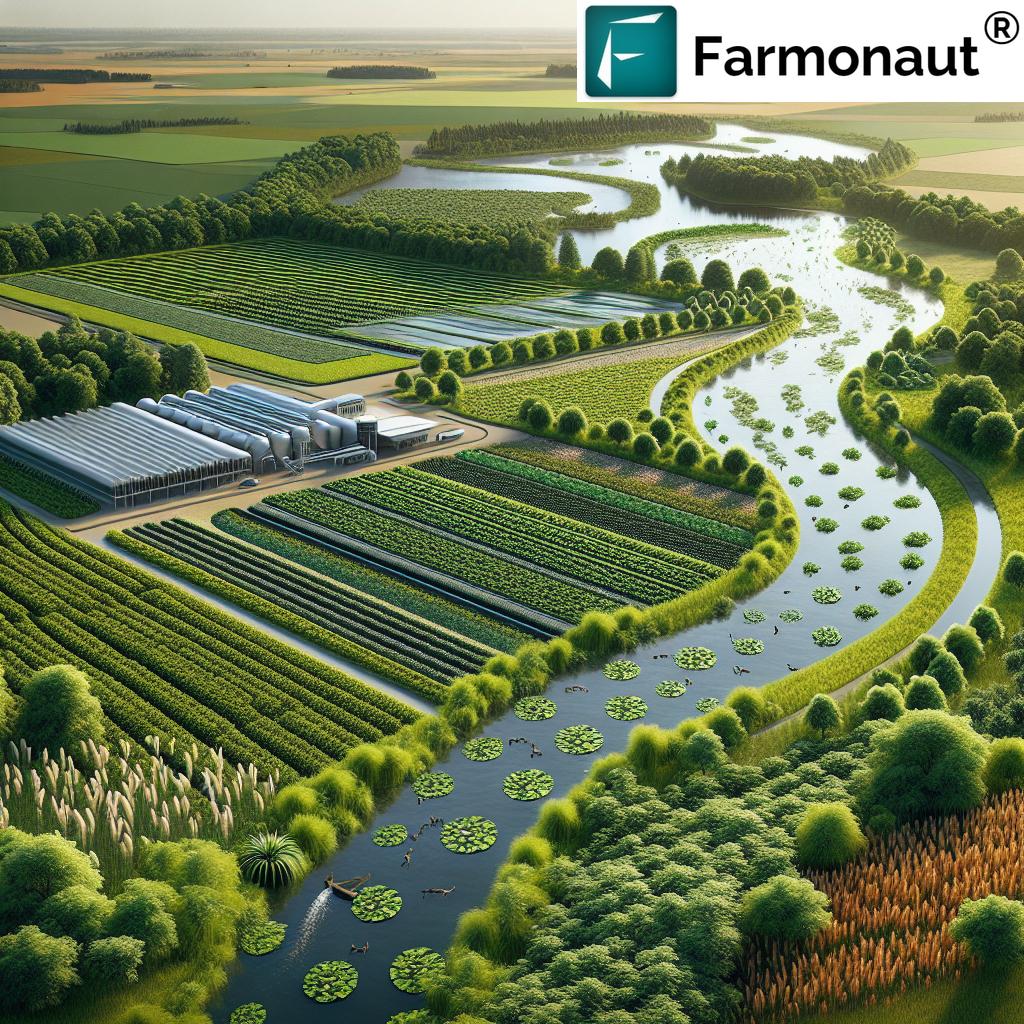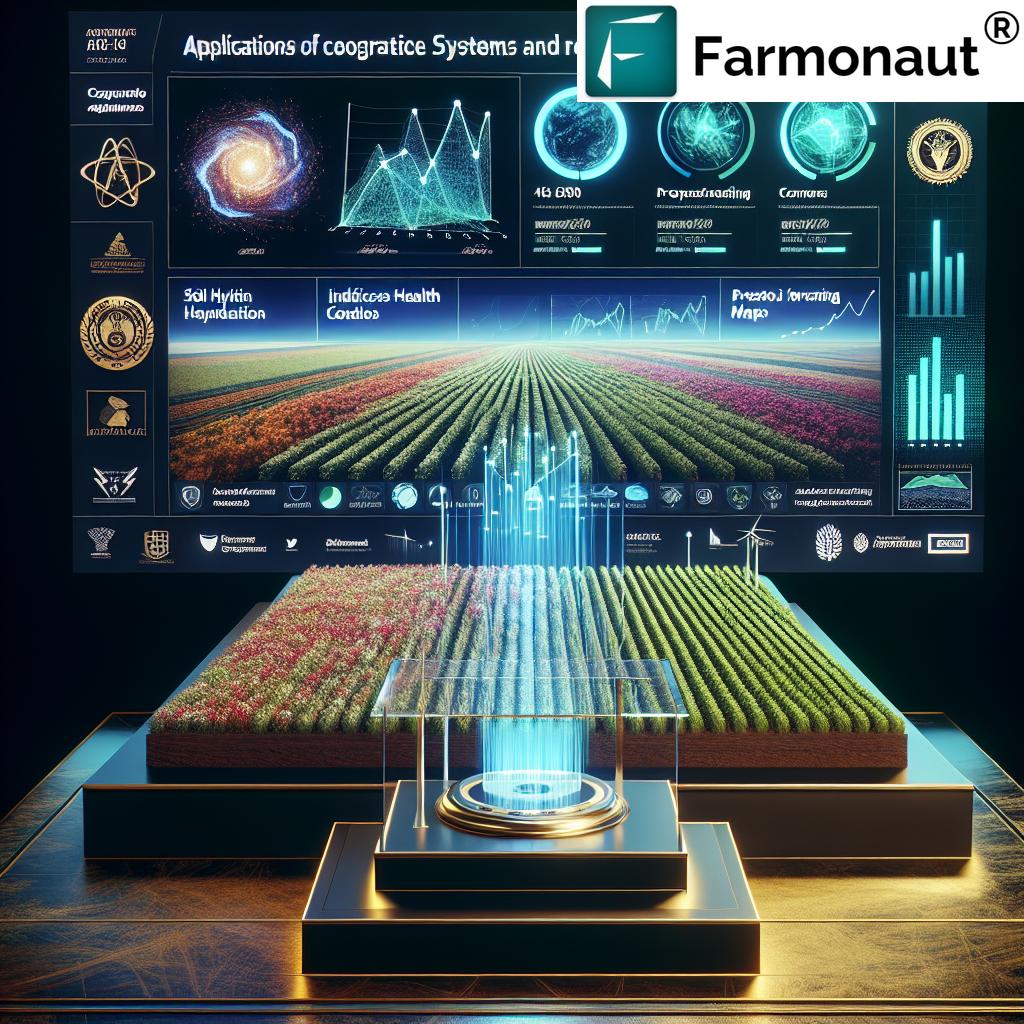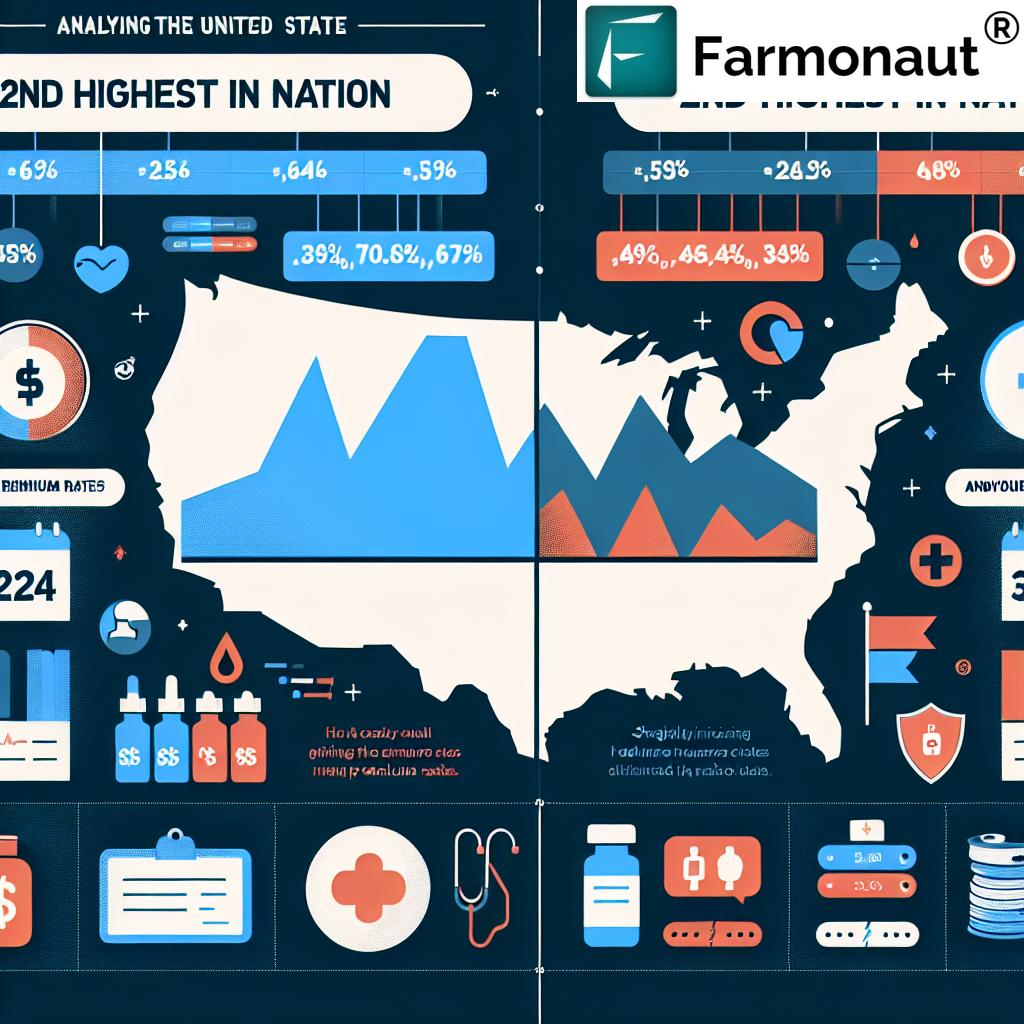USDA Invests $85 Million in Nebraska’s Climate-Smart Agriculture: Boosting Conservation and Sustainable Farming Practices
“USDA allocates $85 million out of $1.5 billion for Nebraska’s climate-smart agriculture and conservation projects.”

In a groundbreaking move to address natural resource challenges and promote sustainable farming practices, the United States Department of Agriculture (USDA) has announced a significant investment of $85 million in Nebraska’s climate-smart agriculture initiatives. This allocation is part of a larger $1.5 billion commitment to partnership-driven conservation projects across the nation. As we delve into the details of this transformative investment, we’ll explore how it’s set to reshape the agricultural landscape in Nebraska and beyond.
The USDA’s Vision for Climate-Smart Agriculture
The USDA’s investment in Nebraska is a testament to its commitment to combating the climate crisis while simultaneously improving resource management in agriculture. This unprecedented funding aims to support a wide array of conservation projects and climate-smart farming practices that will benefit both producers and the environment. Let’s break down the key components of this initiative:
- Regional Conservation Partnership Program (RCPP): A significant portion of the funding will be channeled through the RCPP, which fosters collaboration between the USDA’s Natural Resources Conservation Service (NRCS) and local partners.
- Soil Health Improvement Techniques: Emphasis on practices that enhance soil quality and fertility, crucial for sustainable crop production.
- Water Conservation in Agriculture: Initiatives to improve irrigation efficiency and protect vital water resources.
- Grassland Restoration Techniques: Projects aimed at preserving and rejuvenating Nebraska’s prairies and grasslands.
- Precision Irrigation Management: Implementation of advanced technologies to optimize water use in farming.
These initiatives are designed to address pressing environmental concerns while ensuring the long-term viability of Nebraska’s agricultural sector. By adopting these climate-smart practices, farmers and landowners can play a crucial role in reducing carbon emissions, improving soil health, and protecting groundwater resources.
The Role of Technology in Climate-Smart Agriculture
As we embrace these conservation efforts, it’s important to highlight the role of technology in implementing and monitoring climate-smart agricultural practices. Innovative platforms like Farmonaut are at the forefront of this agricultural revolution, offering advanced satellite-based farm management solutions that align perfectly with the USDA’s vision for sustainable farming.
Farmonaut’s technology enables farmers to:
- Monitor crop health in real-time using satellite imagery
- Optimize resource usage, including water and fertilizers
- Track and reduce carbon footprints in agricultural operations
- Implement precision farming techniques for improved efficiency
By leveraging such advanced technologies, Nebraska’s farmers can more effectively implement the conservation practices supported by the USDA’s investment.
Breaking Down the $85 Million Investment
To better understand how the USDA’s $85 million investment will be utilized in Nebraska, let’s examine the key areas of focus and their expected impacts:
| Initiative Type | Funding Allocation (Estimated) | Target Area | Expected Benefits |
|---|---|---|---|
| Irrigation Efficiency | $25 million | Central and Western Nebraska | Water Conservation, Reduced Energy Costs |
| Soil Health Improvement | $20 million | Statewide | Improved Soil Quality, Carbon Sequestration |
| Grassland Restoration | $15 million | Sandhills Region | Habitat Preservation, Erosion Control |
| Nutrient Management | $15 million | Eastern Nebraska | Reduced Water Pollution, Optimized Crop Yields |
| Regenerative Agriculture | $10 million | Statewide | Ecosystem Restoration, Increased Biodiversity |
This allocation demonstrates a comprehensive approach to addressing Nebraska’s diverse agricultural challenges, from water scarcity in the west to soil degradation in the east.
Empowering Farmers with Resources and Knowledge
A crucial aspect of the USDA’s investment is providing farmers and landowners with the resources and knowledge necessary to adopt climate-smart practices. This includes:
- Educational programs on sustainable farming techniques
- Financial assistance for implementing conservation projects
- Access to cutting-edge agricultural technologies
- Partnerships with local conservation districts and NGOs
By empowering farmers with these resources, the USDA aims to create a ripple effect of positive change across Nebraska’s agricultural landscape.
“Nebraska’s initiatives aim to improve soil health, protect groundwater, and reduce carbon emissions through sustainable farming practices.”
The Impact of Conservation Projects on Nebraska’s Agriculture
The conservation projects funded by this USDA investment are expected to have far-reaching impacts on Nebraska’s agriculture sector. Some of the key benefits include:
- Enhanced Soil Health: Improved soil structure and fertility lead to better crop yields and resilience against climate stressors.
- Water Conservation: Efficient irrigation systems and water management practices help preserve Nebraska’s precious water resources.
- Carbon Emission Reduction: Adoption of regenerative agriculture methods contributes to carbon sequestration and mitigates climate change impacts.
- Biodiversity Preservation: Grassland restoration projects support wildlife habitats and maintain ecological balance.
- Economic Resilience: Sustainable farming practices can lead to long-term cost savings and improved farm profitability.
These outcomes align perfectly with the goals of climate-smart agriculture, ensuring that Nebraska’s farming community can thrive while contributing to environmental conservation.
Leveraging Technology for Precision Agriculture
As we embrace these conservation efforts, it’s crucial to highlight the role of technology in implementing and monitoring climate-smart agricultural practices. Innovative platforms like Farmonaut offer advanced solutions that align perfectly with the USDA’s vision for sustainable farming.
Farmonaut’s technology enables farmers to:
- Monitor crop health in real-time using satellite imagery
- Optimize resource usage, including water and fertilizers
- Track and reduce carbon footprints in agricultural operations
- Implement precision farming techniques for improved efficiency
By leveraging such advanced technologies, Nebraska’s farmers can more effectively implement the conservation practices supported by the USDA’s investment.
The Role of Partnerships in Conservation
The success of these climate-smart agriculture initiatives heavily relies on strong partnerships between various stakeholders. The USDA’s Regional Conservation Partnership Program (RCPP) plays a crucial role in fostering these collaborations. Key partners in Nebraska include:
- Natural Resources Districts (NRDs)
- Nebraska Department of Natural Resources
- University of Nebraska-Lincoln Extension
- Local conservation organizations
- Tribal communities
These partnerships ensure that conservation efforts are tailored to local needs and conditions, maximizing their effectiveness and long-term sustainability.

Addressing Specific Environmental Challenges in Nebraska
Nebraska faces unique environmental challenges that these conservation projects aim to address:
- Groundwater Depletion: Particularly in the Ogallala Aquifer region, where precision irrigation management is crucial.
- Soil Erosion: Especially in areas prone to wind and water erosion, necessitating soil health improvement techniques.
- Nutrient Runoff: In eastern Nebraska, where improved nutrient management practices can significantly reduce water pollution.
- Grassland Conversion: Protecting and restoring native prairies to maintain biodiversity and ecosystem services.
By targeting these specific challenges, the USDA’s investment aims to create a more resilient and sustainable agricultural system in Nebraska.
The Future of Farming: Integrating Technology and Conservation
As we look to the future of agriculture in Nebraska, the integration of technology and conservation practices will be paramount. Platforms like Farmonaut are at the forefront of this agricultural revolution, offering solutions that complement the USDA’s initiatives.
Farmonaut’s API (https://sat.farmonaut.com/api) and Developer Documentation (Farmonaut API Docs) provide developers and agricultural technologists with the tools to create innovative applications that support climate-smart farming practices.
The Economic Impact of Climate-Smart Agriculture
While the environmental benefits of these conservation projects are clear, it’s important to highlight the potential economic impact on Nebraska’s agricultural sector:
- Cost Savings: Improved resource management leads to reduced input costs for farmers.
- Yield Optimization: Healthier soils and more efficient water use can result in better crop yields.
- New Market Opportunities: Sustainable farming practices open doors to premium markets and eco-friendly products.
- Long-term Farm Viability: By adapting to climate change, farms become more resilient and sustainable in the long run.
These economic benefits underscore the win-win nature of climate-smart agriculture, benefiting both the environment and the farming community.
Measuring Success: Monitoring and Evaluation
To ensure the effectiveness of these conservation projects, robust monitoring and evaluation systems are essential. This is where technology plays a crucial role:
- Satellite Monitoring: Using platforms like Farmonaut to track changes in land use and vegetation health.
- Soil Testing: Regular analysis to measure improvements in soil health and carbon sequestration.
- Water Quality Assessments: Monitoring changes in water quality to evaluate the impact of nutrient management practices.
- Biodiversity Surveys: Tracking changes in wildlife populations and plant diversity in restored areas.
These monitoring efforts will provide valuable data to guide future conservation initiatives and demonstrate the tangible impacts of the USDA’s investment.
Empowering the Next Generation of Farmers
The USDA’s investment in climate-smart agriculture also focuses on educating and empowering the next generation of farmers. This includes:
- Partnerships with agricultural schools and universities
- Youth-focused conservation programs
- Mentorship opportunities with experienced sustainable farmers
- Access to cutting-edge agricultural technologies and practices
By investing in education and training, these initiatives ensure that the principles of climate-smart agriculture will continue to be implemented and improved upon for generations to come.
The Global Context: Nebraska’s Role in Sustainable Agriculture
While the USDA’s investment focuses on Nebraska, it’s important to consider the global context of these efforts:
- Nebraska’s agricultural practices can serve as a model for other regions facing similar challenges.
- The state’s contributions to sustainable farming practices help address global food security concerns.
- By reducing its carbon footprint, Nebraska’s agriculture sector contributes to international climate change mitigation efforts.
This global perspective highlights the far-reaching impact of local conservation efforts and underscores the importance of continued investment in climate-smart agriculture.
Conclusion: A Sustainable Future for Nebraska’s Agriculture
The USDA’s $85 million investment in Nebraska’s climate-smart agriculture marks a significant step towards a more sustainable and resilient farming future. By focusing on conservation projects, soil health improvement, water conservation, and innovative farming practices, this initiative addresses critical environmental challenges while supporting the long-term viability of Nebraska’s agricultural sector.
As we move forward, the integration of advanced technologies like those offered by Farmonaut will play a crucial role in implementing and monitoring these conservation efforts. The collaboration between farmers, government agencies, conservation organizations, and technology providers will be key to maximizing the impact of this investment.
Nebraska’s farmers and landowners now have an unprecedented opportunity to lead the way in sustainable agriculture, demonstrating how climate-smart practices can benefit both the environment and the agricultural community. As these initiatives take root, we can look forward to a future where Nebraska’s farms are not only more productive but also more resilient and environmentally friendly.
FAQs
- Q: What is climate-smart agriculture?
A: Climate-smart agriculture is an approach that helps guide actions to transform agricultural systems to effectively support development and ensure food security in a changing climate. It aims to tackle three main objectives: sustainably increasing agricultural productivity and incomes, adapting and building resilience to climate change, and reducing greenhouse gas emissions where possible. - Q: How will the $85 million USDA investment benefit Nebraska farmers?
A: The investment will provide financial and technical assistance to farmers for implementing conservation practices, improving irrigation efficiency, enhancing soil health, and adopting sustainable farming methods. This will lead to reduced input costs, improved crop yields, and long-term farm sustainability. - Q: What role does technology play in climate-smart agriculture?
A: Technology plays a crucial role in climate-smart agriculture by enabling precision farming, real-time crop monitoring, efficient resource management, and data-driven decision-making. Platforms like Farmonaut offer satellite-based solutions that help farmers implement and track conservation practices effectively. - Q: How can farmers access the resources provided by this USDA investment?
A: Farmers can access these resources by contacting their local USDA Service Center, Natural Resources Conservation Service (NRCS) office, or partnering conservation districts. They can also explore online resources provided by the USDA and state agricultural agencies for information on available programs and application processes. - Q: What are some examples of climate-smart farming practices supported by this initiative?
A: Some examples include cover cropping, reduced tillage, precision irrigation, nutrient management, crop rotation, agroforestry, and grassland restoration. These practices aim to improve soil health, conserve water, reduce emissions, and enhance overall farm resilience.



















